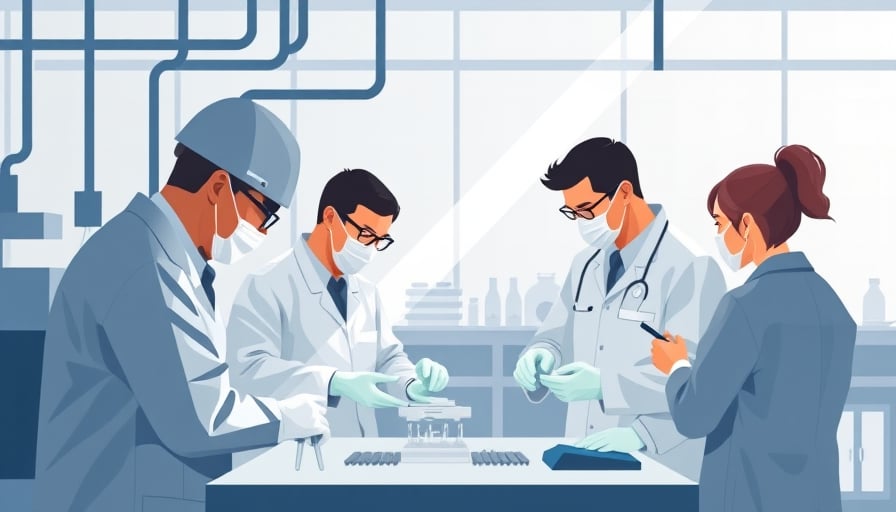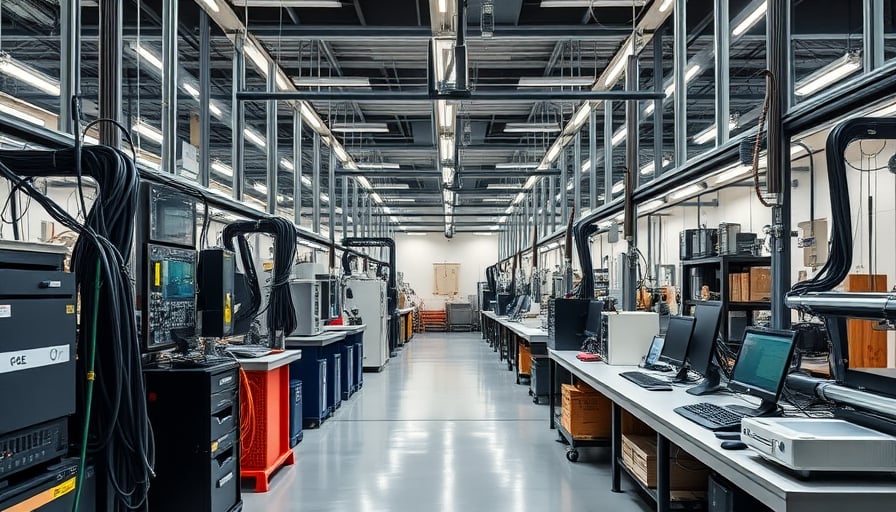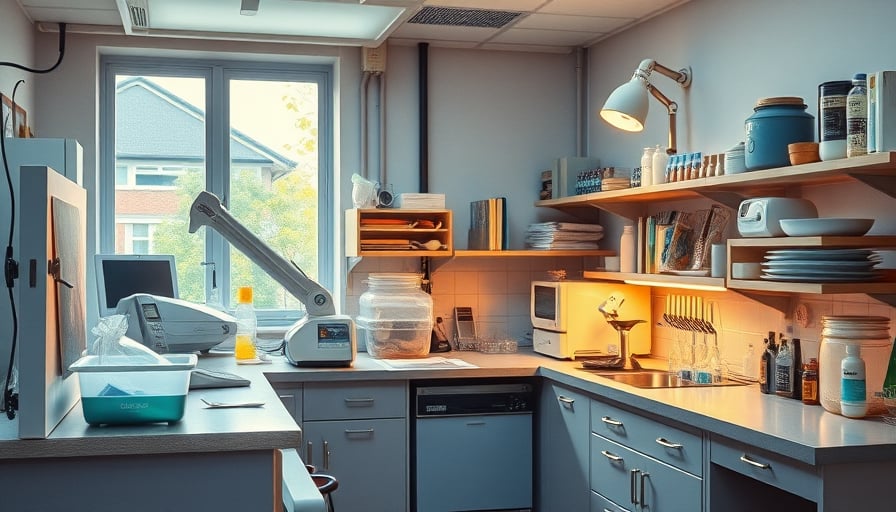NAURA Technology Group Co., Ltd. Positions Itself at the Nexus of AI‑Driven Semiconductor Demand
NAURA Technology Group Co., Ltd., a Shenzhen‑listed integrated micro‑electronics enterprise, has long specialized in the design, manufacture and sale of high‑precision electronic equipment and components. Its portfolio includes integrated circuit equipment, solar battery system equipment, mass flow controllers, thin‑film transistors, and lithium‑battery manufacturing systems, among others. The company’s market cap of 301 billion CNY and a trailing P/E ratio of 47.75 reflect both its scale and the premium investors assign to its technology‑intensive operations.
1. Rising AI‑Chip Orders Create New Growth Trajectory
The most recent market activity in the semiconductor space underscores an unprecedented surge in demand for next‑generation AI chips. On 25 November 2025, the China Semiconductor Industry Index rose 0.23 %, while constituents such as Shenkong Shares (+13.18 %) and Changchuan Tech (+3.55 %) drove the index higher. The semiconductor‑industry ETF (159582) traded above 2 CNY during the day, marking a 0.15 % increase.
This uptick follows a headline announcement from Taiwan Semiconductor Manufacturing Co. (TSMC) that it will add three 2‑nanometer fabs in southern Taiwan to meet the explosive growth in AI‑chip orders. TSMC’s expansion—estimated at 9 trillion TWD—highlights the escalating need for advanced manufacturing equipment that can handle sub‑3‑nm process nodes.
NAURA’s core business—high‑precision integrated circuit equipment and thin‑film transistors—directly supports this hardware pipeline. The company’s expertise in mass flow control and lithography‑related components positions it to supply the process control systems that are critical to 2‑nm fabrication. As the industry pivots toward smaller, higher‑yield nodes, NAURA’s advanced equipment will become increasingly indispensable.
2. AI‑Hardware Ecosystem Expands Beyond China
Amazon’s recent commitment to invest USD 500 million in expanding AWS AI and high‑performance computing capabilities signals a broader shift toward cloud‑based AI services. Concurrently, China’s domestic AI‑hardware ecosystem is consolidating around “high‑efficiency architecture + scenario‑specific customization + global ecosystem.” This tri‑focus strategy aligns with NAURA’s own development trajectory:
- High‑efficiency architecture – NAURA’s lithium‑battery manufacturing systems and solar battery equipment are engineered for optimal energy density and thermal management, essential for AI edge devices that require low power consumption.
- Scenario‑specific customization – The company’s thin‑film transistor solutions are already being adapted for automotive and industrial applications, where AI inference must occur in harsh environments.
- Global ecosystem – NAURA’s supply chain partnerships extend beyond China, enabling it to meet the demands of multinational semiconductor foundries and system integrators.
The convergence of these factors creates a virtuous cycle: as AI applications proliferate across automotive, industrial, and healthcare sectors, the need for robust, energy‑efficient power and storage systems grows, feeding directly into NAURA’s product lines.
3. Market Sentiment and ETF Performance Reinforce the Upswing
In the past week, semiconductor‑device ETFs have experienced notable gains. The 561980 ETF, focused on semiconductor equipment and materials, posted a 1.78 % rise on 24 November, drawing in nearly 75 million CNY of net inflows. Its constituents—Neiwang Shares, Northern Hua Creative, and Nanoda Optoelectronics—recorded double‑digit percentage gains, reflecting investors’ confidence in the sector’s resilience.
NAURA’s own shares have trended upward in tandem, closing at 416.24 CNY on 23 November after a 52‑week high of 473.66 CNY earlier in October. The stock’s price movement mirrors the broader sentiment that advanced semiconductor manufacturing equipment remains a high‑growth, high‑margin segment.
4. Forward‑Looking Outlook
With TSMC’s new fabs and Amazon’s AI infrastructure expansion, the demand for sub‑3‑nm process equipment is poised to accelerate. NAURA’s established expertise in mass flow control, thin‑film transistors, and battery‑manufacturing systems positions it as a key supplier in this value chain. As AI workloads shift from cloud data centers to edge devices—especially in automotive and industrial domains—NAURA’s energy‑efficient battery and power solutions will gain additional traction.
Given the current trajectory, investors who view NAURA as a strategic partner in the AI‑chip ecosystem are likely to benefit from continued upside potential. The company’s robust market cap, coupled with its technology breadth, offers a compelling case for long‑term growth in an era where semiconductor and AI technologies are increasingly intertwined.




